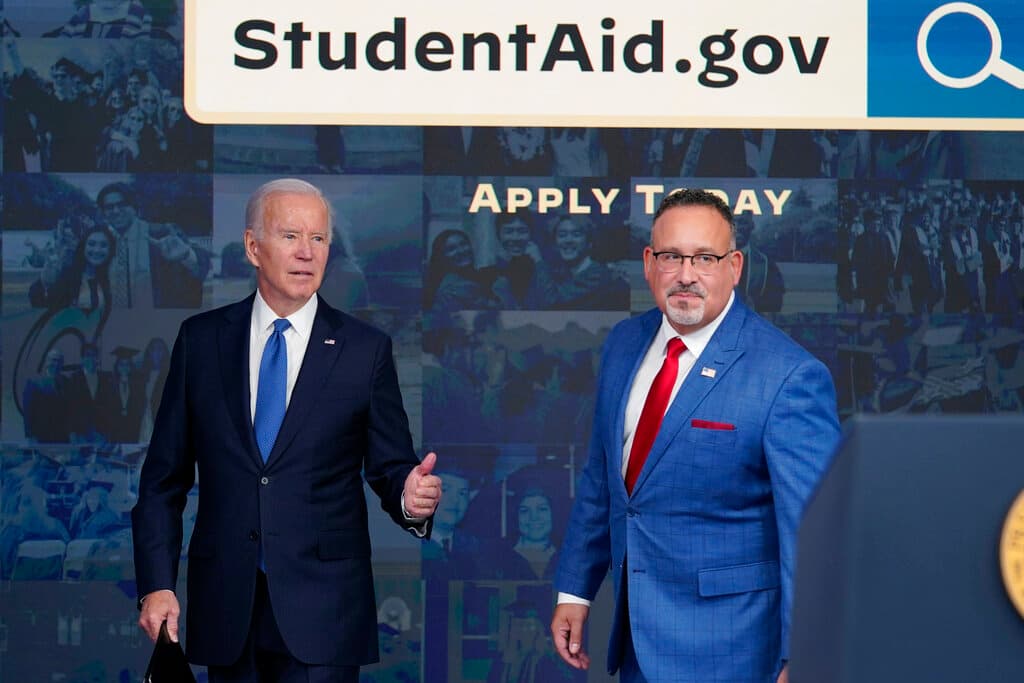Missouri Leads Coalition of States Suing Department of Education for Its ‘Cloak and Dagger’ Tactics To Cancel Student Debt
Filing claims that early attempts to cancel all student debt would add nearly $150 billion to deficit.

A coalition of state attorneys general has filed a lawsuit against the Department of Education, alleging that it is preparing student loan providers to cancel large amounts of student debt under a new rule that has not even received final approval.
The lawsuit — which is led by Missouri Attorney General Andrew Bailey and includes the states of Georgia, Alabama, Arkansas, Florida, North Dakota, and Ohio — claims the federal agency is making an early attempt to cancel the debt that would add approximately $147 billion to the federal deficit, according to filings made public by the Committee for a Responsible Federal Budget.
The group also alleges that the cancellation would cost far more than the Biden administration’s income-driven repayment plan, referred to as the SAVE plan, which is currently on an injunction hold.
The cadre of seven state governments is suing to block the proposed plan and its provisions, which would cancel some or even all debt for approximately 30 million borrowers.
“This is the third time the Secretary has unlawfully tried to cancel hundreds of billions of dollars in loans,” reads a portion of the plaintiffs’ lawsuit referring to the head of the Department of Education, Miguel Cardona. “Courts stopped him the first two times when he tried to do so openly. So now he is trying to do so through cloak and dagger.”
The complaint details one incident in which the Department sent an e-mail to a student loan servicer with instructions to “report balances of all loans to the Department between September 2 and September 5 and to fix any errors by September 6.”
The filing claims that the loan forgiveness could begin as early as this week based on the discovery of the e-mailed message and that the Department of Education has not committed to waiting for up to 60 days, mandated under typical federal and congressional regulations after the final ruling is published, to implement the relief plan.

